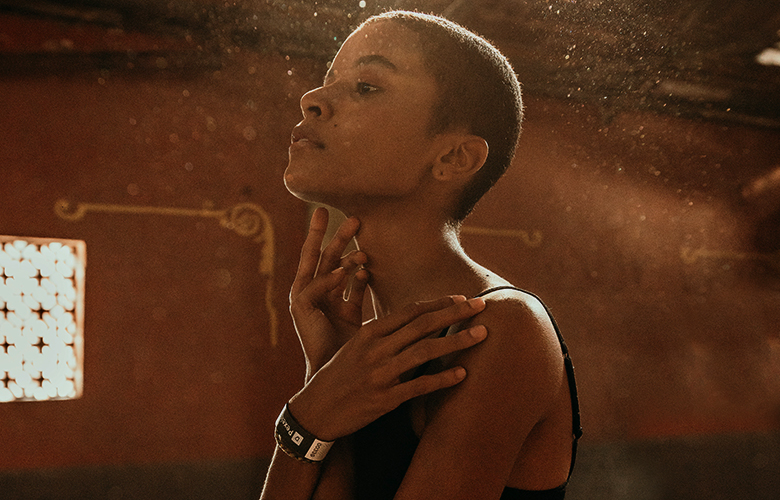
How many times have you felt you weren’t as good as the dancer next to you? That you just didn’t measure up? Award winning and Emmy® considered actress Loren Kinsella knows exactly what that’s like. “I went to a very traditional school, and I mean that in the best and worst ways.” According to Kinsella, studying at an “old school” type ballet academy can definitely take its toll on the body, but sometimes more so on the mind.
“We had weigh ins, where our weights were posted for everyone to see. We were lined up in front of the mirror and body shamed, called ‘elephants’ and asked how could we ‘dare’ to be on stage looking like we do? We were told we could eat ‘only lettuce leaves with a little bit of pepper’. We weren’t even allowed to drink water in class.”
Ballet students who are subjected to this respond in different ways. “Many kids ended up fighting with eating disorders, often ending up in the hospital getting nutrients through an IV. One poor girl was in and out of alcohol recovery programs by the age of fifteen. But still, we did it. Some people called it a ‘passion’, I sometimes joked that it was more a Stockholm Syndrome. I know I was praised more and felt the best about myself the less I ate and the less I weighed. I usually tried to keep my calorie count below 500 daily, often with the aid of appetite suppressants, diuretics and laxatives, while taking four classes a day. The better I looked, the more prone to stress fractures and other injuries I was. I got injured a lot.”

Unfortunately, Kinsella’s experience is not uncommon in the world of ballet. A New York Times article from a few years back quoted Michelle Warren, a specialist in eating disorders, who said the average incidence of eating disorders in the female white middle class population is 1 in 100, but in classical ballet it is one in five. The BBC reported in 2013 that the percentage of dancers with eating disorders is estimated to be ten times higher than in the general population.
Balanchine gave the best roles to dancers with long, slender legs and thin bodies, and eventually that body type became the norm, especially for female dancers. Male dancers also feel pressure to be thin, but it is not as intense because they must also have some muscle for the lifts that are required when they partner with female dancers.

There are many anecdotes from dancers that match Kinsella’s Stockholm Syndrome quote. The Stockholm Syndrome is a psychological term for situations in which hostages become emotionally attached to their captors, even though the captors are doing horrible things, like torturing them. It’s a form of brainwashing, or extreme submission to a person who has power over you. The situation in some schools of ballet, where a stern teacher pushes a dancer so hard that it could almost be called abuse, but the dancer responds by taking all the criticism to heart and trying to be thinner, more skilled, more compliant to every instruction, is similar.
If a teacher or ballet master praises a dancer for being thin and gives important roles to her, the other dancers will try to match her body type, even to the point of having an eating disorder.
Monika Saigal, MS, RD, CEDRD-S, CDN, a Registered Dietitian Nutritionist, Certified Eating Disorders Registered Dietitian, former professional dancer, believes that it is essential for dancers to receive education on how to nourish their bodies and avoid dangerous dieting practices, especially because dieting is one of the most common and preventable precursors to developing an eating disorder. In addition, dance educators and staff need training on eating disorder awareness and prevention. Anyone involved in the training and care of a dancer should know how to spot the early signs of an eating disorder, what to do (and what not to do) if they suspect a dancer has an eating disorder, and how to help create a positive environment that protects against the development of eating disorders.
Instructors now realize that starvation and bulimia don’t work. Ballet is a physically demanding enterprise, and you can’t perform it well if your body is breaking down or you’re passing out from starvation. Many ballet companies, like the Royal Ballet in the UK, have now established eating disorder policies to help staff and students recognize the signs of an eating disorder and offer help. The Royal Ballet is a supporter of one of the biggest eating disorder centers in the UK, which is certainly a big step in the right direction.
As for Loren Kinsella, her obsession with thinness did not end until she left the dance world. As she says, the end came, “Pretty much when I retired. I was finally able to relax and not weigh myself five times a day. Granted, I gained weight immediately, and I was horrified, but with a lot of work, I finally gained confidence and was able to deal with it. Of course everything I did was my own choice and I take full responsibility for that. No one forced me to do anything.”

Kinsella’s advice for young dancers is blunt: “Don’t believe the lies! Celebrate yourself. If you land that pirouette, give yourself a mental high-five. If you get a compliment from the instructor, do your happy dance. If you have an elegant upper body, flaunt if, if you’re a great actor on stage, own it! Approach yourself as a work in progress, and don’t (or try not) to compare yourself to that ‘perfect’ person in class. I promise you, they don’t think they’re perfect — even if they pretend they do. Be your own cheering section. YOUR HEALTH IS THE MOST IMPORTANT THING! Remember, you can’t dance or act or experience if you’re sick. Keep believing in yourself and you will find your way.”
Dance is a sublime art form that can inspire us with its beauty. There is no need for the dancers who dedicate so many years to the pursuit of artistic perfection to ruin their bodies and endanger their futures in the process. Eating disorders should not be welcome in the world of dance.
If you or anyone you know might be struggling with an eating disorder, please contact nationaleatingdisorders.org
Stay or Play? The Difference Between Setbacks and Shutdowns


Born and raised in New Orleans, Loren Kinsella attended the prestigious New Orleans Center for the Creative Arts, and later, the world renown Royal Academy of Dramatic Art in London, England. Loren’s career includes being a soloist with the Delta Festival Ballet, Broadway Shows, International tours, an International Championship Martial Arts record, and an Emmy® consideration. She has been the recipient of many awards for her performance ability and holds a BA, MFA and DFA in Film/TV and Theater. She consistently works in theater, film and television.
Read Full Profile© 2021 TheatreArtLife. All rights reserved.

Thank you so much for reading, but you have now reached your free article limit for this month.
Our contributors are currently writing more articles for you to enjoy.
To keep reading, all you have to do is become a subscriber and then you can read unlimited articles anytime.
Your investment will help us continue to ignite connections across the globe in live entertainment and build this community for industry professionals.